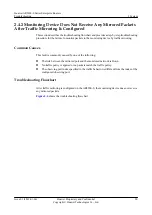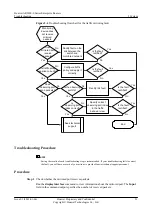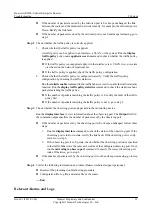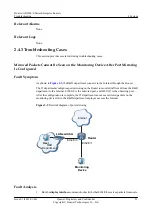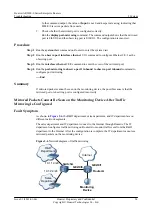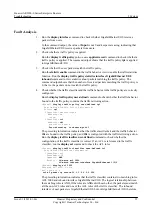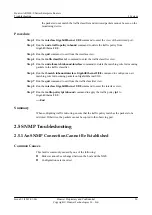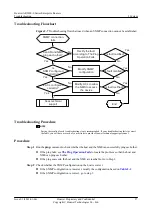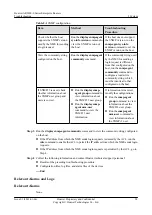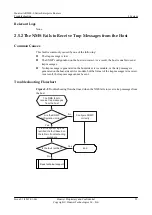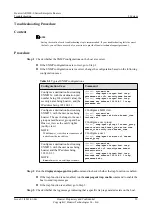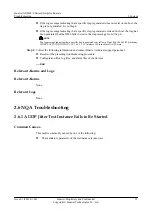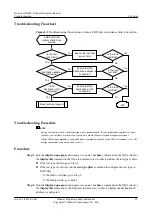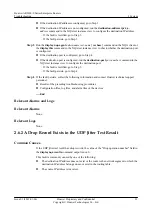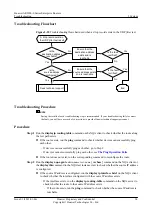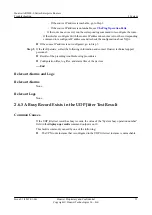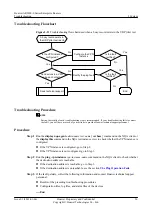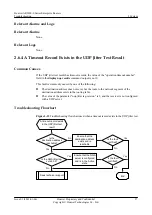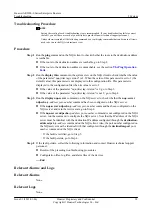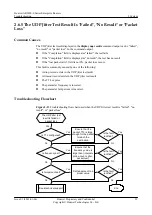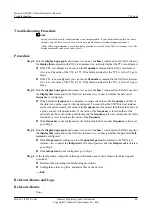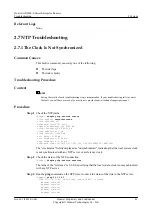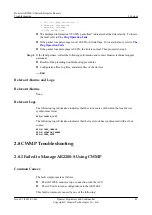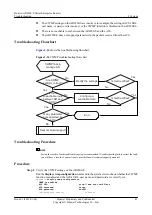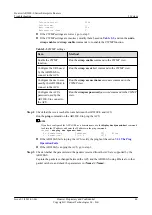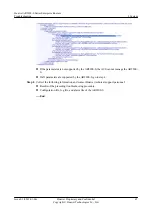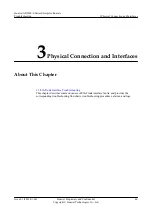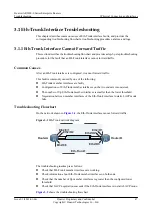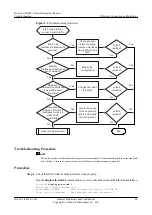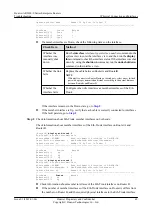
Troubleshooting Flowchart
Figure 2-10
Troubleshooting flowchart used when a drop record exists in the UDP jitter test
Is the
destination address
reachable?
A drop record exists in
the UDP jitter test result
Ensure that the
destination address
exists and is
reachable
Is the
source address
configured?
Seek technical support
Is the fault
rectified?
End
Yes
No
No
Yes
Ensure that the
source address exists
and is reachable
Is the fault
rectified?
Yes
No
Yes
No
Troubleshooting Procedure
NOTE
Saving the results of each troubleshooting step is recommended. If your troubleshooting fails to correct
the fault, you will have a record of your actions to provide Huawei technical support personnel.
Procedure
Step 1
Run the
display ip routing-table
command on the NQA client to check whether the route along
the test path exists.
l
If the route exists, run the
ping
command to check whether devices can successfully ping
each other.
–
If devices can successfully ping each other, go to Step 2.
–
If devices cannot successfully ping each other, see
l
If the route does not exist, run the corresponding command to reconfigure the route.
Step 2
Run the
display nqa-agent
admin-name test-name
[
verbose
] command on the NQA client or
the
display this
command in the NQA test instance view to check whether the source IP address
is configured.
l
If the source IP address is configured, run the
display ip interface brief
on the NQA client
to check whether the interface configured with the source IP address exists.
–
If the interface exists, run the
display ip routing-table
command on the NQA server to
check whether the route to the source IP address exists.
–
If the route exists, run the
ping
command to check whether the source IP address is
reachable.
Huawei AR2200-S Series Enterprise Routers
Troubleshooting
2 System
Issue 01 (2012-01-06)
Huawei Proprietary and Confidential
Copyright © Huawei Technologies Co., Ltd.
34

